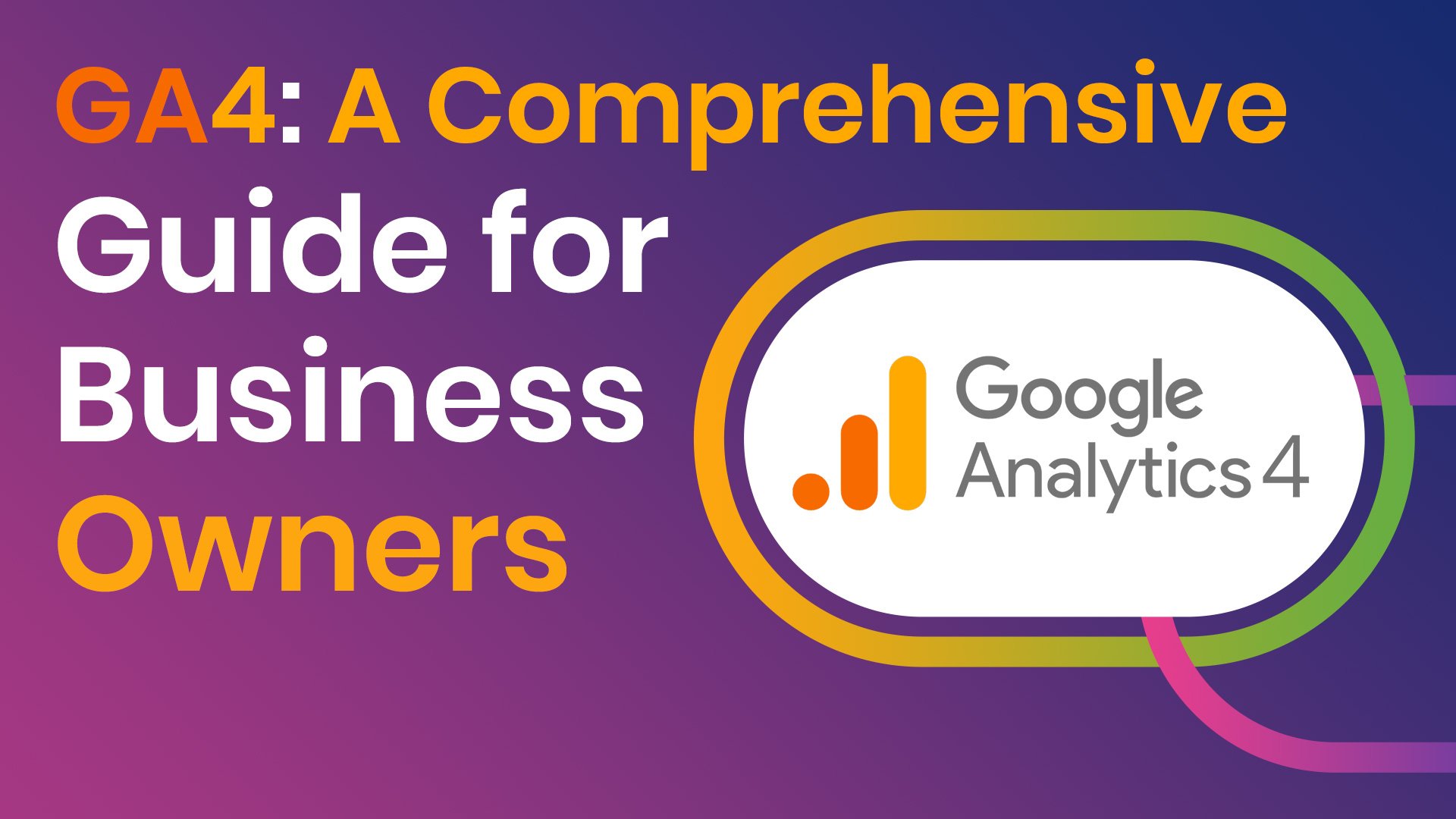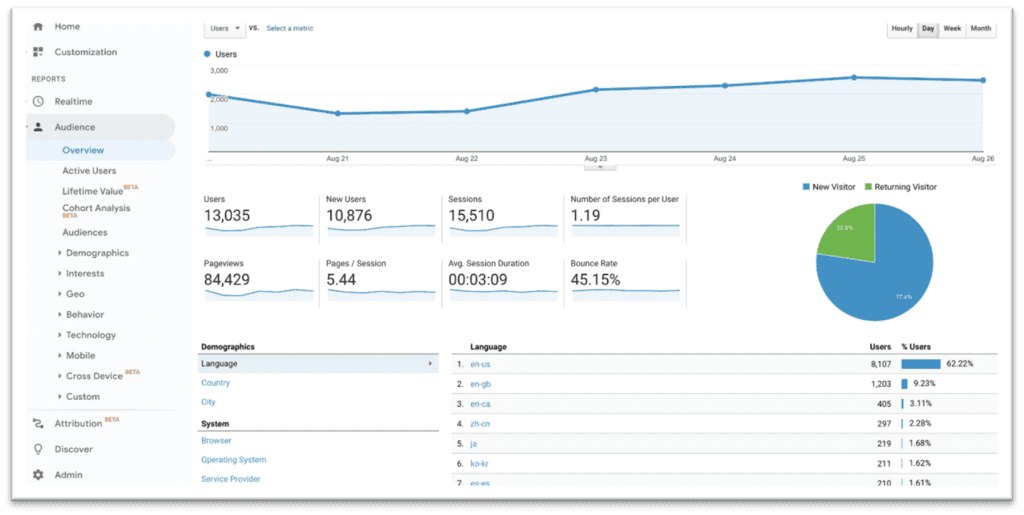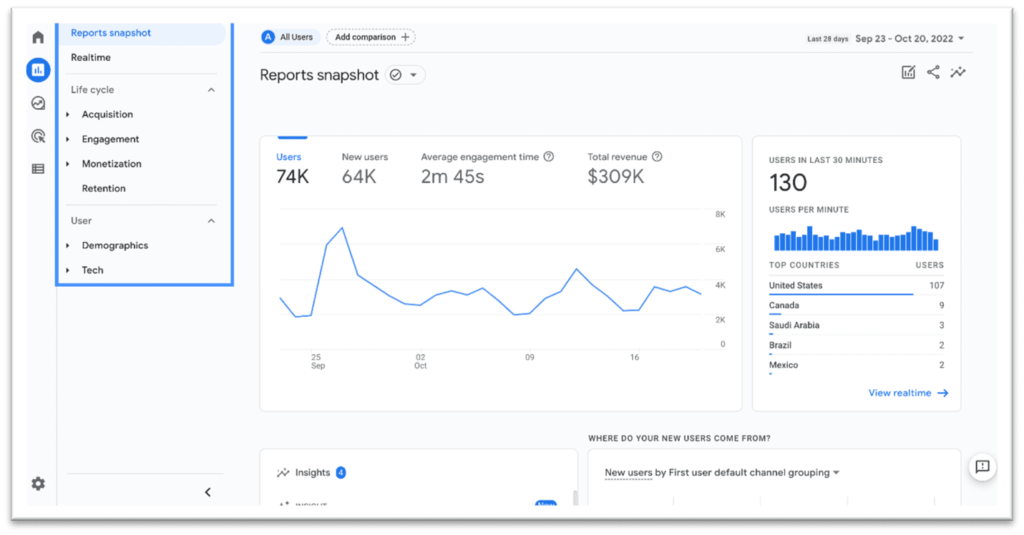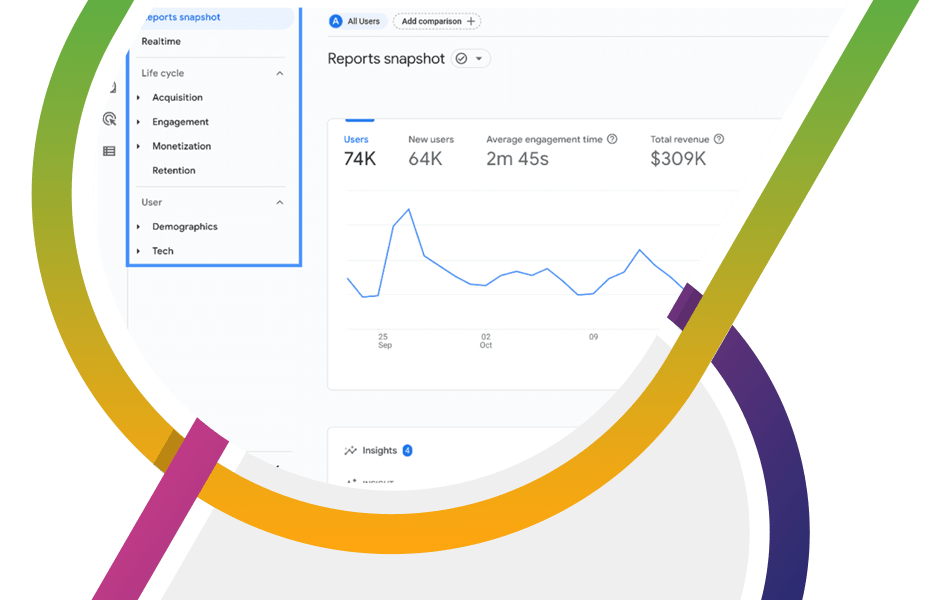
Free Digital Marketing Review
We’ll show you how to hit your business goals with result-driven digital marketing.
Introduction to Google Analytics 4
Let’s face it. How often do you or your team look at your Google Analytics data? If you aren’t already, it may be time to review this essential data regularly.
Part of my role is to keep an eye on all things data regarding Link Digital’s marketing and lead generation process. Analytics is vital to the success of these activities.

What does this mean to me as a business owner?
Do you or one of your team currently monitor your website traffic using Google Analytics, then you will most likely be using Universal Analytics (Google Analytics 3). This service is ending on 1st July 2023 (link) as businesses are advised by Google to move across to Google Analytics 4 or GA4.
How do I tell which one im using?
The simplest way is to login to your account?
You should see either this sort of view
Typical GA3 View

Typical GA4 View

At Little Bit of History
Google Analytics is a tool that has become synonymous with website analytics. From its initial release in 2005 (Following the acquisition of Urchin Software Corporation), Google has introduced various updates and improvements to meet the ever-evolving needs of website owners, digital marketers, and data enthusiasts. As a free service, it is incredibly valuable.
In 2012, Google introduced Universal Analytics, significantly changing how data was collected and processed. This update enabled more accurate tracking of user interactions across multiple devices and platforms. The most recent iteration, GA4, was launched in October 2020 as a response to the changing landscape of digital marketing and the increasing importance of user privacy.
Why The Change to GA4 – The Technical Analytics Bits!
With an emphasis on user privacy, regulations such as the General Data Protection Regulation (GDPR) and the California Consumer Privacy Act (CCPA) have come into effect. GA4 is designed to adapt to a world with more privacy-focused regulations, offering better compliance with these laws.
Improved cross-platform tracking
GA4 enables better tracking of user interactions across various platforms and devices (such as websites and apps), providing a more comprehensive view of a customer’s journey.
Enhanced user insights
GA4 introduces new machine learning capabilities that provide more advanced insights and predictive analytics, allowing businesses to make data-driven decisions more efficiently.
Benefits of GA4
More in-depth data analysis: GA4 introduces the Analysis Hub, allowing users to create custom reports and perform advanced analysis efficiently.
Event-based tracking: GA4 emphasises event tracking more than session-based tracking, providing a more granular understanding of user behaviour on your website.
AI-powered insights
GA4’s integration with Google’s machine learning capabilities provides automated insights, helping businesses quickly identify trends and opportunities.
Codeless event tracking: GA4 simplifies event tracking by introducing the Enhanced Measurement feature, allowing users to track events without writing custom code.
What Does GA4 Mean for Your Website?
The introduction of GA4 brings a shift in how website owners and digital marketers analyse their data. It enables a more comprehensive understanding of user behaviour and helps optimise the overall user experience. The insights provided by GA4 can help you make more informed decisions to drive growth and improve the performance of your website.
What Does GA4 Mean for Google Ads Marketing?
Ultimately this is my personal opinion. After lots of training, we are now, as a business, incredibly comfortable with the setup process and configuration and tracking. This does mean we have had to learn about Google Tag Manager, which is complex in its own right. One key learning is that in order to configure conversion tracking, you need to be an admin for both Google Ads and Google Analytics. If not, you won’t see all the relevant information to set this up.
Making the Change to GA4
Transitioning to GA4 may seem daunting, but Google has provided many resources to help users adapt to the new platform.
Here are some steps to follow and resources to consult:
Set up a new GA4 property
To start with GA4, create a new GA4 property alongside your existing Universal Analytics property. This allows you to collect data in parallel without disrupting your existing setup.
Follow this step-by-step guide to set up your GA4 property: Getting started with Google Analytics 4
Configure GA4 settings
Customise your GA4 property settings to ensure accurate data collection and compliance with privacy regulations. Settings to configure include data retention, data sharing, and IP anonymisation.
Refer to this guide for more information on configuring your GA4 property: Google Analytics 4 Settings
Implement Enhanced Measurement
Take advantage of the Enhanced Measurement feature to track user interactions without writing custom code.
This guide will help you enable and configure Enhanced Measurement: Using Enhanced Measurement in GA4
Set up custom events and conversions
GA4’s event-based tracking allows for a more granular understanding of user behaviour.
Learn how to create custom events and conversions in GA4 with this guide: Creating and managing events in GA4
Migrate to Google Tag Manager (GTM)
If you haven’t already, consider migrating to GTM for a more streamlined approach to managing tags and tracking codes. GTM works seamlessly with GA4, providing additional benefits like faster site performance and improved data quality.
Follow this guide to get started with GTM: Getting started with Google Tag Manager
Learn how to use GA4’s Analysis Hub
The Analysis Hub is a powerful tool that enables custom reporting and advanced data analysis.
Please familiarise yourself with the Analysis Hub and its capabilities with this guide.
Using the Analysis Hub in GA4
Monitor and compare data: As you collect data in your GA4 property, compare it with your existing Universal Analytics data to identify discrepancies and optimise your setup accordingly.
Conclusion
The transition to Google Analytics 4 marks a significant milestone in the evolution of web analytics. With its focus on user privacy, cross-platform tracking, and advanced insights, GA4 provides website owners and digital marketers with the tools needed to thrive in an ever-changing digital landscape. By taking the time to understand and adapt to GA4, you’ll be well-positioned to harness the power of data-driven decision-making and drive growth for your website.
So, take the leap and embrace the future of web analytics with Google Analytics 4. With the wealth of resources and guides Google provides, you’ll be well-equipped to make a smooth transition and unlock new insights to propel your website’s performance to new heights.

Need help with your website and marketing?
Book a FREE growth strategy session with our experts
Our award-winning team will review your website and marketing goals to provide you with crucial insight and advice.

4.9 STAR
Google reviews
With 10+ years of experience, Link Digital has helped hundreds of businesses to succeed online. We can help yours too!

